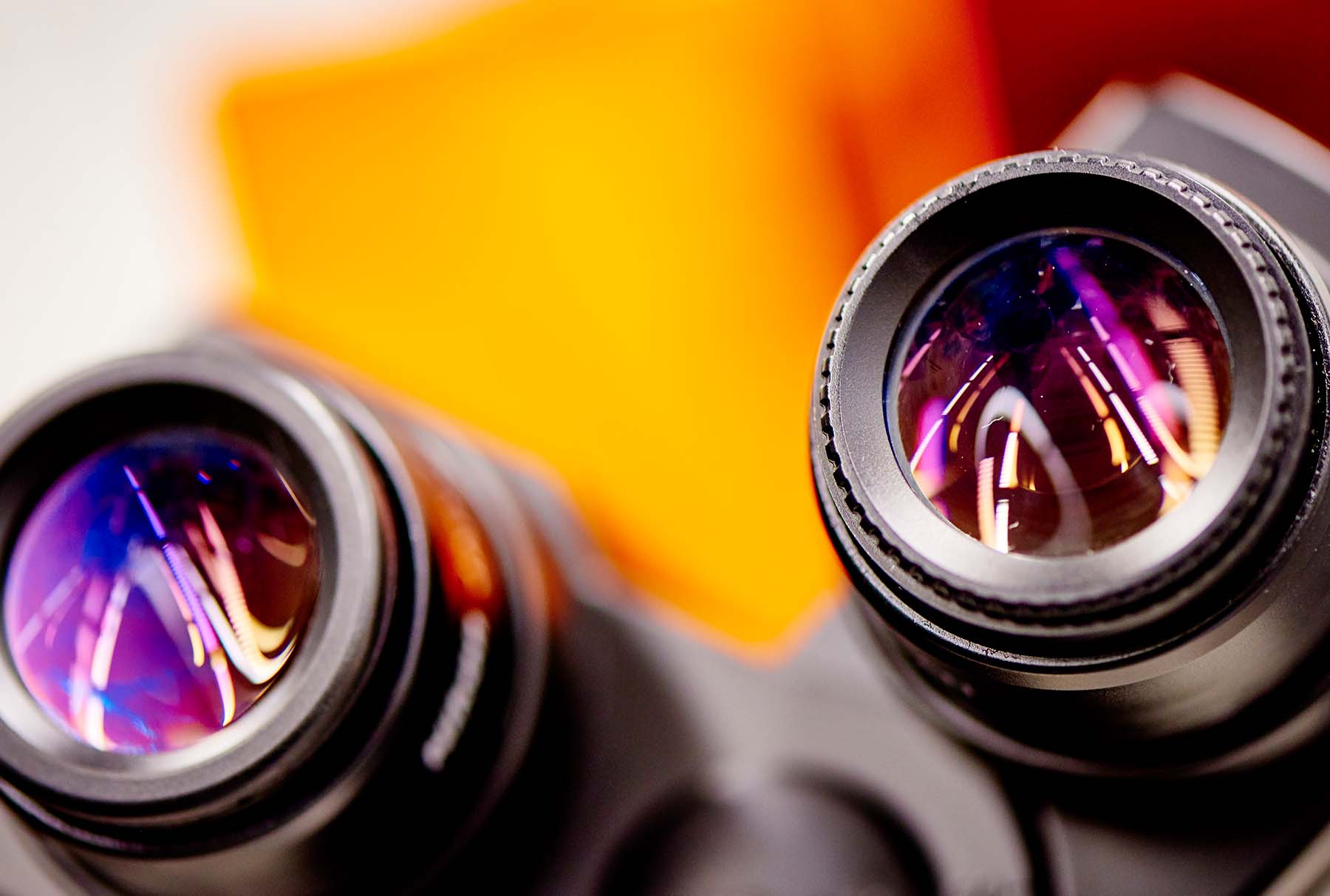Chemistry Mass Spectrometry
We develop small molecule analysis methods to fit your needs.
The chemistry mass spectrometry laboratory was established in 2018, following investment of over £300k, to consolidate chemistry and chemical biology mass spectrometry capability into a single facility. We provide mass spectrometry analysis for isolated small organic and inorganic molecules (e.g. synthetic molecules, natural products, small peptides, drugs and drug precursors) as well as mixtures (e.g. reaction monitoring, biological metabolites).
Isolated small molecules can be studied directly by a range of mass spectrometry techniques. We have a suite of mass analysers that can provide rapid low resolution mass, high resolution accurate mass, elemental composition and structural information via fragmentation analysis (MSn).
Small molecule mixtures are typically analysed using liquid chromatography mass spectrometry (LC-MS), one of the most widespread and efficient analytical techniques for the separation and analysis of chemical mixtures. The chemistry mass spectrometry laboratory employs modern UPLC-MS methods for the separation and detection of compounds in a wide range complex chemical and biological samples.
Additional liquid chromatography instrumentation is also available capable of normal and reverse phase separations (analytical and semi-preparative) with UV/vis, diode array and fluorescence detectors.
Drawing on our expert mass spectrometry knowledge and access to a wide range of HPLC techniques, we are confident that we can develop small molecule analysis methods to fit your needs.
Waters Xevo TQ-S
Triple Quadrupole UPLC-MS, MSE, MS/MS, MRM, SONAR
The Waters Xevo TQ-S is a Triple Quadrupole Mass Analyser, connected to a Waters Acquity UPLC system, capable of extremely sensitive detection and quantification of a wide range of chemical compounds. The UPLC system includes an Auto-Sampler, Column Oven, PDA Detector, and a Binary Solvent Pump.
This is used for small molecule detection in biological samples. It has capability for both compound identification and quantitation.
It can be set up for short chromatography run times, to detect known compounds, and longer run times for targeted/non-targeted metabolomics.
Waters Xevo G2-XS
Quadrupole Time-of-Filght UPLC-MS/MS
The Waters Xevo G2-XS is a Quadrupole Time-of-Flight (QToF) Mass Analyser coupled to a Waters Acquity i-Class UPLC system, capable of the high-resolution determination of molecular mass to < 10 ppm accuracy. The UPLC includes an Auto-Sampler, Column Oven, PDA Detector, and a Binary Solvent Pump. The Xevo G2-XS is fitted with a ‘Lock-Spray’ dual ESI source to allow for the combined introduction of analyte and lock-mass reference compounds into the mass analyser.
This is used for small molecule detection in biological samples. It has capability for both compound identification and quantitation.
It can be set up for short chromatography run times, to detect known compounds, and longer run times for targeted/non-targeted metabolomics.
Agilent MSD XT
Single Quadrupole UPLC-MS
The Agilent MSD XT is a Single Quadrupole Mass Analyser coupled to an Agilent Infinity 1260 II - UPLC system. The UPLC system includes an Auto-Sampler, Column Oven, and Quaternary Solvent Pump. Methods of Ionisation for the MSD XT include, an ESI source, and a converted APCI source, which allows the direct analysis of solid samples using the Atmospheric Solids Analysis Probe.
Agilent 5977B MSD
Single Quadrupole – GC-MS
The Agilent 5977B MSD MS is a Single Quadrupole Mass Analyser connected to an Agilent 8890 Gas Chromatography system, fitted with an Auto-Sampler, Split/Splitless Injector, and Electron Impact and Chemical Ionisation sources. Suitable for the Qualitative and Quantitative analysis of volatile, non-polar, compounds of low molecular weight (< 500 Da).
ThermoFinnigan LCQ Advantage
Ion Trap – HPLC-MSn
The ThermoFinnigan LCQ Advantage is a 3D Ion-Trap Mass Analyser, connected to a ThermoFinnigan Surveyor HPLC system, capable of the sequential (MSn) fragmentation of molecules. The HPLC system includes and Auto-Sampler, Column Oven, Photodiode Array (PDA) Detector, and a Quaternary Solvent Pump. Methods of Ionisation for the LCQ Advantage include ESI, APCI, and Nano-Spray ESI, which allows sensitive analysis of compounds in trace amounts.
Contact us
To request a quote, or ask us a question, you can complete our analytical services general enquiry form below.
If you’re a Newcastle University staff member or student, you can visit the internal Research and Analytical Services' intranet page.
